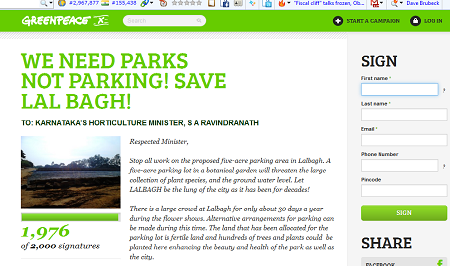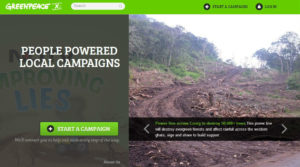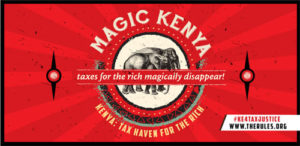It’s been just over three months since Greenpeace India’s new open campaign platform made its quiet debut, and already two people-powered victories are in sight, including the stopping of industrial dumping in Kadamdih village.
The platform, currently being soft launched, is called Greenpeace Extraor GPX , and it’s Greenpeace India’s answer to the challenge of balancing national and international campaigns with local needs, says James North, Greenpeace India’s digital media manager.
“Our campaigns didn’t always match with meeting the needs of our constituents,” James tells Mob Lab, adding staff had begun experimenting with working on local issues.
“It became apparent that the best way to do this would be to build a platform that we can facilitate (people) in doing that themselves.”
The platform was built by ControlShift — a tech team who have done much work with GetUp! in Australia. The people-led campaign platform is available to other organizations, and is currently being used by 38 Degrees in the United Kingdom.
How it Works
GPX allows user to start, run and deliver their own campaign on anything they’re interested in.
“It can be big or small, heroic or ordinary. This is about power to the people. If you have an idea to make your community, your school, your local playground or the planet a better place, we offer this platform to assist you,” states the GPX site.
GPX also offers its technology to groups and organizations, which James says has the potential to make a large impact as a myriad of small groups in India don’t have access to digital tools.
GPX Wins and Challenges
One GPX user had been advocating on the dangers of industrial dumping in his native village for years, but it wasn’t until he used the platform that people in power started to take notice. The user started a petition ordering a nearby company to stop industrial dumping, which garnered 100 signatures. Next, Greenpeace India put the user in touch with a video company that makes films. While the crew that traveled to Kadamdih village wasn’t able to do any filming, the possibility convinced city officials to order the company to stop dumping waste — which it has — and clean up the contaminated area, which is still in the courts.
“The power of it was not so much mobilizing large numbers of people. The company knew they were being watched by the outside world and not just the local villages,” says James, on GPX’s first success.
A second petition has collected nearly 2,000 signatures and is expected to halt a proposed plan to create a five-acre parking lot in Lalbagh, an iconic botanical garden in Bangalore dating back to the 1760s. The campaign was started by the Walkers Association of Lalbagh.
In total, 19 petitions have been launched. They deal mostly with local issues, from getting a school to power its new multi-purpose hall with solar panels to increasing floral species in a capital city to increase soil fertility.
James says they’re learning the platform’s biggest challenge is the amount of support needed to get a campaign off the ground. Others working on campaign platforms, including Change.org, have told him it’s a common issue.
Already, one full-time staff member is addressing this challenge. Online campaigner Janet Vrinda works directly with people starting campaigns, walking them them through decisions like who it should be directed to, what the ask is, the timeline and why the issue is important.
The campaigns are pushed out through a team of online volunteers and Greenpeace’s India’s social media networks. Connecting a team of committed online volunteers skilled in areas like blogging or coding with GPX users, is also working well in helping the campaigns get off the ground.
While some campaigns take off immediately, many haven’t left the initial campaign start phase, according to Janet.
Despite these challenges, Greenpeace India is encouraged by the platform’s potential.
“The staff is really excited about this,” Janet says, adding they look forward to supporting and learning from the campaigns.
GPX plans to officially debut in 2013. Its success, Janet says, will be measured by the number of campaign victories, number of campaigns launched, the coverage issues receive, and the difference the site is making in people’s lives.
To learn more about Greenpeace Extra, click here.
Stay Connected: @jamesphase
Related Stories:
International Volunteering Lab launches in Berlin with new staff team
Spark Summit explores potential for volunteer platforms
Do you have an innovation in mobilisation and people-powered campaigns? Share it with Mob Lab by contacting moblab@greenpeace.org.




